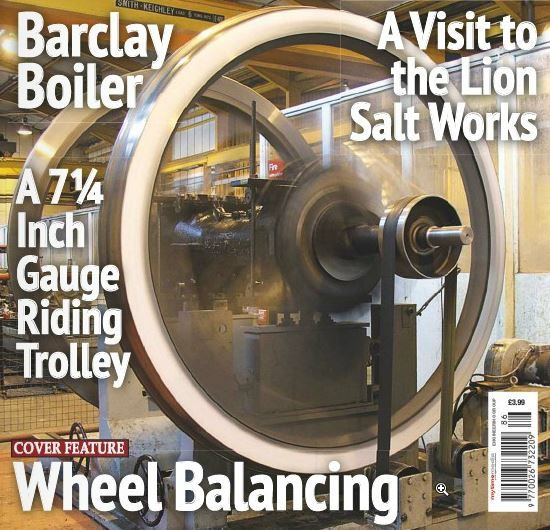Kenneth J Cook's book on his time at Swindon contains pictures of the Zeiss equipment used for optical alignment at Swindon. This gave such accuracy that parts such as connecting and coupling rods could be manufactured in the Works and merely lifted into place on a locomotive without any "fettling" to suit that particular locomotive.
With regard to balancing, on any reciprocating engine, because of the a portion of the weight of the reciprocating parts has to be taken into account, the wheels (in the case of a locomotive) or an internal combustion engine is unlikely to be in perfect primary balance. Once the machine begins to rotate, the balance weights produce a secondary force, acting at right angles to the primary. The dreaded Hammer Blow, so feared by Railway Civil Engineers. 4 cylinder engines with cranks at 90 degrees, and axles at 180 degrees were means of reducing this, improving overall Hammer Blow, and the riding, but likely to produce a modicum of "nosing".
The best that can be achieved is to make the unit a 90 degree Vee, (As used on Brough Superior motorcycles.) Even this is not perfect, although the secondaries balance each other out, but not in exactly the same plane, so even a V Twin tends to "sqirm" in the horizontal plane. (And it gets worse as you progress through a V4 to a V8 or V16 because the couple increases because of the length of the engine)
V6 and V12 bring different problems, since the firing intervals are likely to be 120 degrees rather than 180, assuming a four stroke cycle, resulting in a 60 degree V in most cases.
In line 4 cylinder engines can be tamed using a Lanchester Harmonic Balancer. In this two shafts carrying weights, and timed to the crankshaft are driven at twice engine speed. Again, the balance weights have to be chosen to produce as great as possible balance. (Not always easy within the envelop of the engine)
A 3 cylinder, with crank pins at 120 degrees is naturally unbalanced, and requires really special efforts to reduce vibration. Balance weights will improve the situation, but not provide a complete cure.
Put two "unbalanced" 3 cylinders back to back to produce an in line 6 and the balance is good, but a couple will still exist causing the engine to "squirm".
By changing the position of the mounting points, a reduction on forces can be achieved (A E C did this with their 6 cylinder Diesel engines for vehicles, More recently, car engines did the same thing with 4 cylinder units ,by placing the placing the mounts on the torque axis, thus minimising the effects of the couple).
Probably perfect balance is obtainable; in Utopia!
Howard
Edited By Howard Lewis on 21/07/2018 21:01:16
Hopper.





